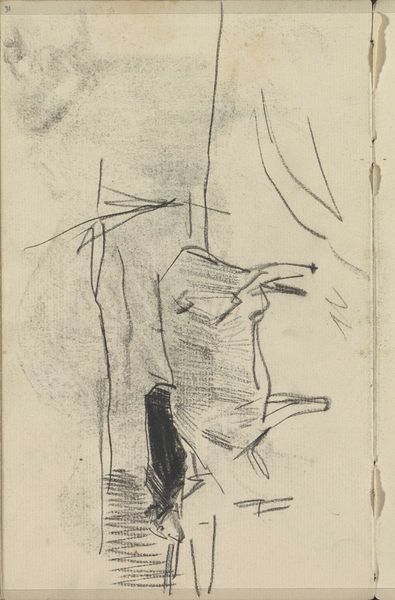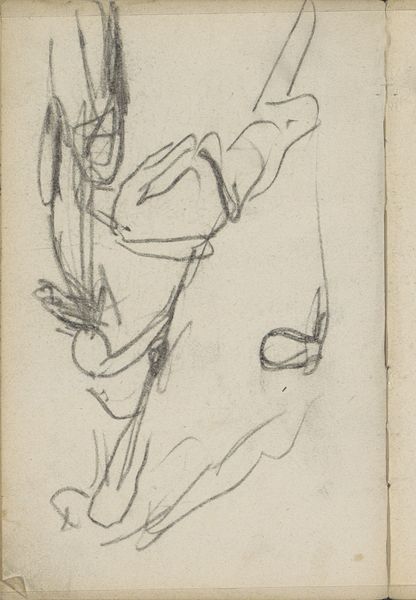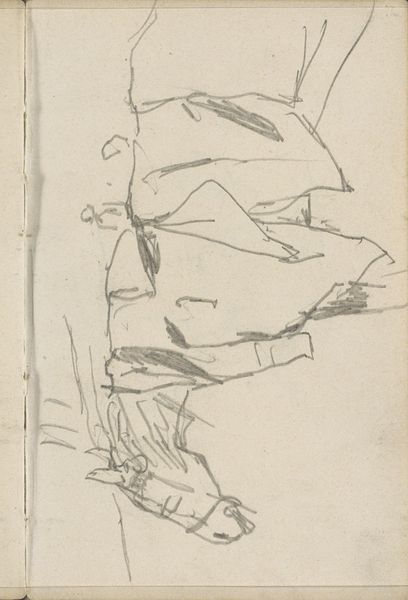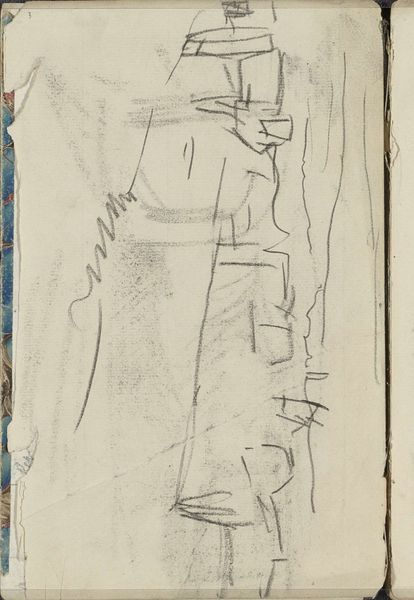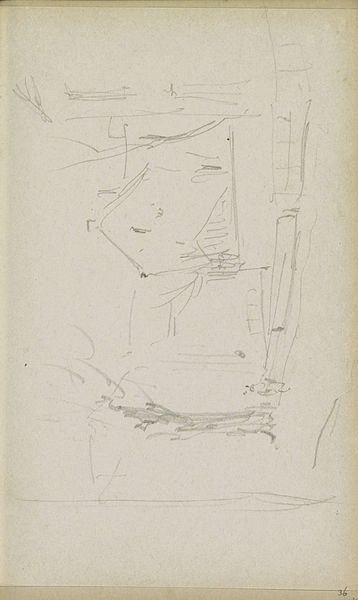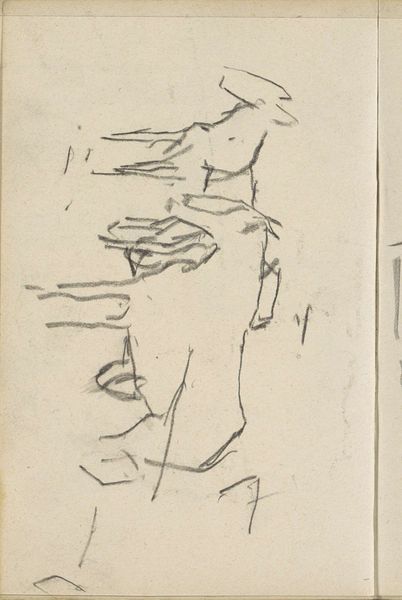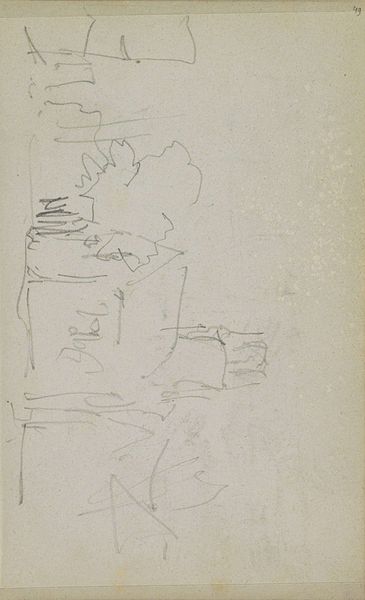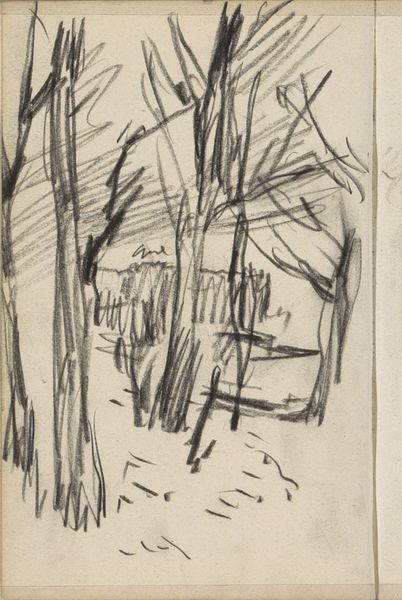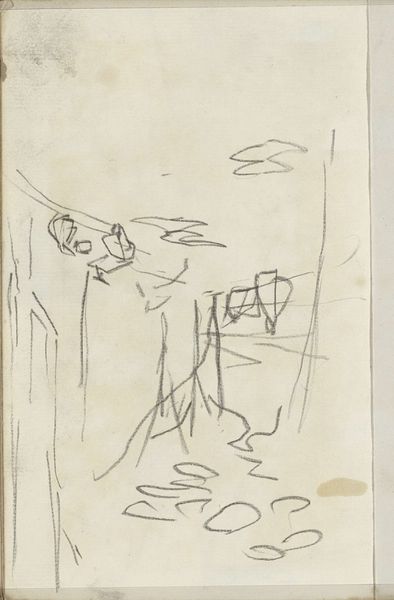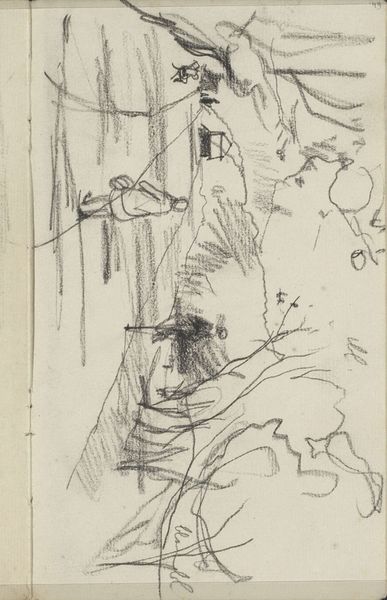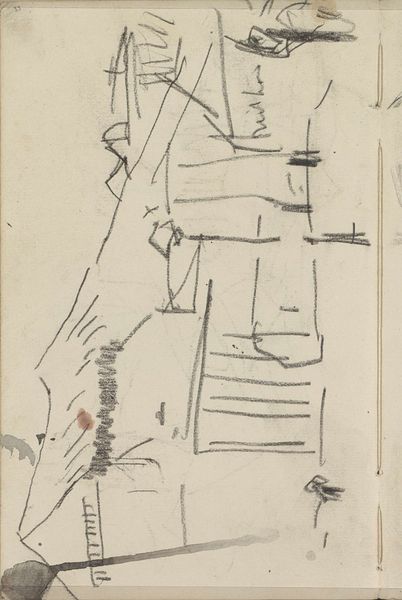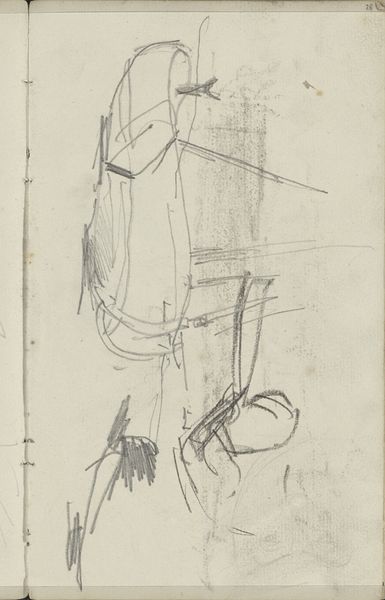
Arbeiders aan het werk, mogelijk in de Sint Agnietenstraat te Amsterdam c. 1903
0:00
0:00
drawing, pencil
#
drawing
#
dutch-golden-age
#
pen sketch
#
landscape
#
personal sketchbook
#
idea generation sketch
#
sketchwork
#
ink drawing experimentation
#
pen-ink sketch
#
pencil
#
sketchbook drawing
#
cityscape
#
storyboard and sketchbook work
#
sketchbook art
#
realism
#
initial sketch
Copyright: Rijks Museum: Open Domain
Curator: My first thought? Stark and urgent, yet muted. The scene feels industrial, almost oppressive with its angular lines. Editor: Indeed. This intriguing pencil sketch, titled "Arbeiders aan het werk, mogelijk in de Sint Agnietenstraat te Amsterdam," meaning "Workers at Work, possibly in Sint Agnietenstraat in Amsterdam," was created by George Hendrik Breitner around 1903. You can find it at the Rijksmuseum. Breitner's street scenes often captured the realities of working-class life in Amsterdam. Curator: So, Breitner witnessed the rise of the industrial sector in Amsterdam and channeled it using simple means. It's amazing how effectively he rendered laborers' bodies. It highlights a period of significant urban change and the shift in labor, showing workers contributing to a booming industry. Editor: Right. And it is very telling to examine this work within the context of Amsterdam's social and economic history. Breitner challenged artistic conventions and academic art and became associated with the "Amsterdam Impressionism" movement that captured everyday life. These unidealized scenes provided a counter-narrative. The choice to focus on labor provides insights into a changing urban environment at the turn of the 20th century. Curator: Look closely. I’m struck by how Breitner has approached the use of simple pencil lines to create shading. You almost feel the weight of their labour – the texture of their work clothes even. This all seems deliberately crafted. Editor: Breitner was certainly influenced by photography, particularly in his focus on movement and capturing fleeting moments in urban spaces. Museums played a key role here; these images gained value by their accessibility and inclusion within public and private collections of the period. They shifted from common city encounters to valuable artifacts. Curator: Seeing the materiality of labour represented so bluntly really forces a re-evaluation of what's traditionally valued. Editor: It is true, it gives you a lens to appreciate how art can embody politics. This period, this subject and then Breitner capturing it with his own distinctive view!
Comments
No comments
Be the first to comment and join the conversation on the ultimate creative platform.
